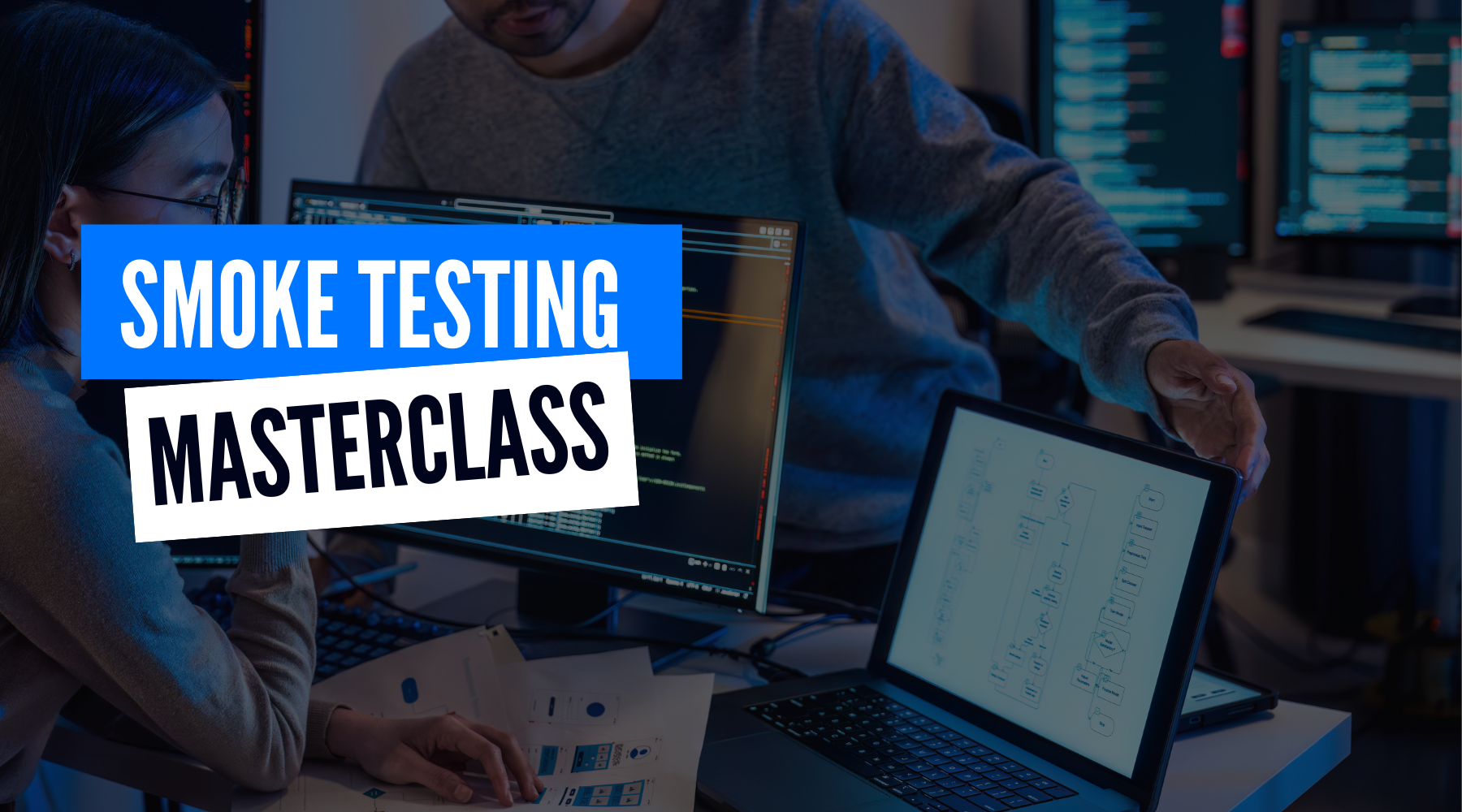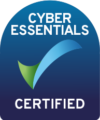The value of that first impression
In the digital age, a customer’s first interaction with your product sets the tone for your brand relationship. Every click, every navigation step, and every loading animation shapes how users perceive your credibility and reliability. This first-impression window can be incredibly brief, seconds, or even fractions of a second, and you don’t get a second chance to make it count. That’s why ensuring basic functionality from the get-go is paramount.
QA smoke testing emerges here as a powerful guardrail. While it may appear basic compared to full regression or performance testing, smoke testing is the gatekeeper that ensures fundamental features are operational and that you’re not pushing a fundamentally flawed product into more extensive testing or production environments. At Digivante, our guiding principle is that every test, no matter how small or quick, contributes significantly to building user trust. Smoke testing is where we validate not just features, but the promise of a positive digital experience.
1. Defining QA smoke testing in the modern context
Historically, the term “smoke test” originates from hardware manufacturing. Before advanced diagnostic tests were run, a device would be powered on to see if it literally started smoking, indicating a catastrophic failure. Translating this concept to software, smoke testing refers to a quick series of checks on your software’s most critical functionalities, answering a simple question: “Does it basically work?”
- Core connectivity check: Can users log in or access the primary pages without error?
- Critical functionality verification: Is the shopping cart adding items? Does the payment gateway process transactions?
- Stability indicator: Are any fundamental or structural failures present that would halt further testing?

In essence, smoke testing is your early warning system – designed to reveal show-stopping bugs long before you invest in deeper, more resource-intensive testing phases.
2. The business case for smoke testing
Companies sometimes downplay the importance of smoke testing, assuming it’s too basic or not rigorous enough to justify a dedicated focus. Yet the business implications of skipping or neglecting this step are profound:
- Cost efficiency: Catching major defects early reduces the avalanche effect of rework, which can cost exponentially more if discovered in later stages, or worse, in production.
- Time savings: Quickly discovering that your core workflows are broken means you can address them promptly. It prevents teams from spending resources on advanced tests or marketing efforts for a product that isn’t ready.
- Confidence booster: When your team knows the build passes smoke tests, they can proceed to more specialised testing – like crowdtesting – without constantly worrying about foundational stability.
- Brand reputation: A meltdown of critical features post-launch damages trust. Smoke testing diminishes the risk of launching a broken experience that erodes brand loyalty in moments.
At Digivante, we see smoke testing as an insurance policy on your development investment. Our digital landscape moves fast, and the window for capturing user attention is narrower than ever. By ensuring your product’s critical pathways are operational, you’re effectively buying yourself the time and trust needed to optimize deeper layers of the user experience.
3. Key differentiators: Smoke testing vs. other testing approaches
Smoke testing is sometimes confused with sanity, regression, or acceptance testing. Each has its place, but their scope and purpose differ significantly:
- Smoke testing: A broad-but-shallow initial check of vital features that determines if the build is stable enough to continue.
- Sanity testing: Conducted after receiving a new software build with minor changes; it verifies the specific areas that were modified without exhaustive checks on everything else.
- Regression testing: Looks across the entire system to ensure that recent changes haven’t broken any existing functionality. It’s often more comprehensive, testing each aspect of the system that might be impacted by a new change.
- Acceptance testing: Typically performed by end-users or client stakeholders, it’s the final sign-off test to confirm the software meets all requirements before going live.
Imagine these methods as layers in a pyramid of assurance. Smoke testing forms the base layer for new builds, while sanity, regression, and acceptance testing fill in deeper layers that further validate quality.
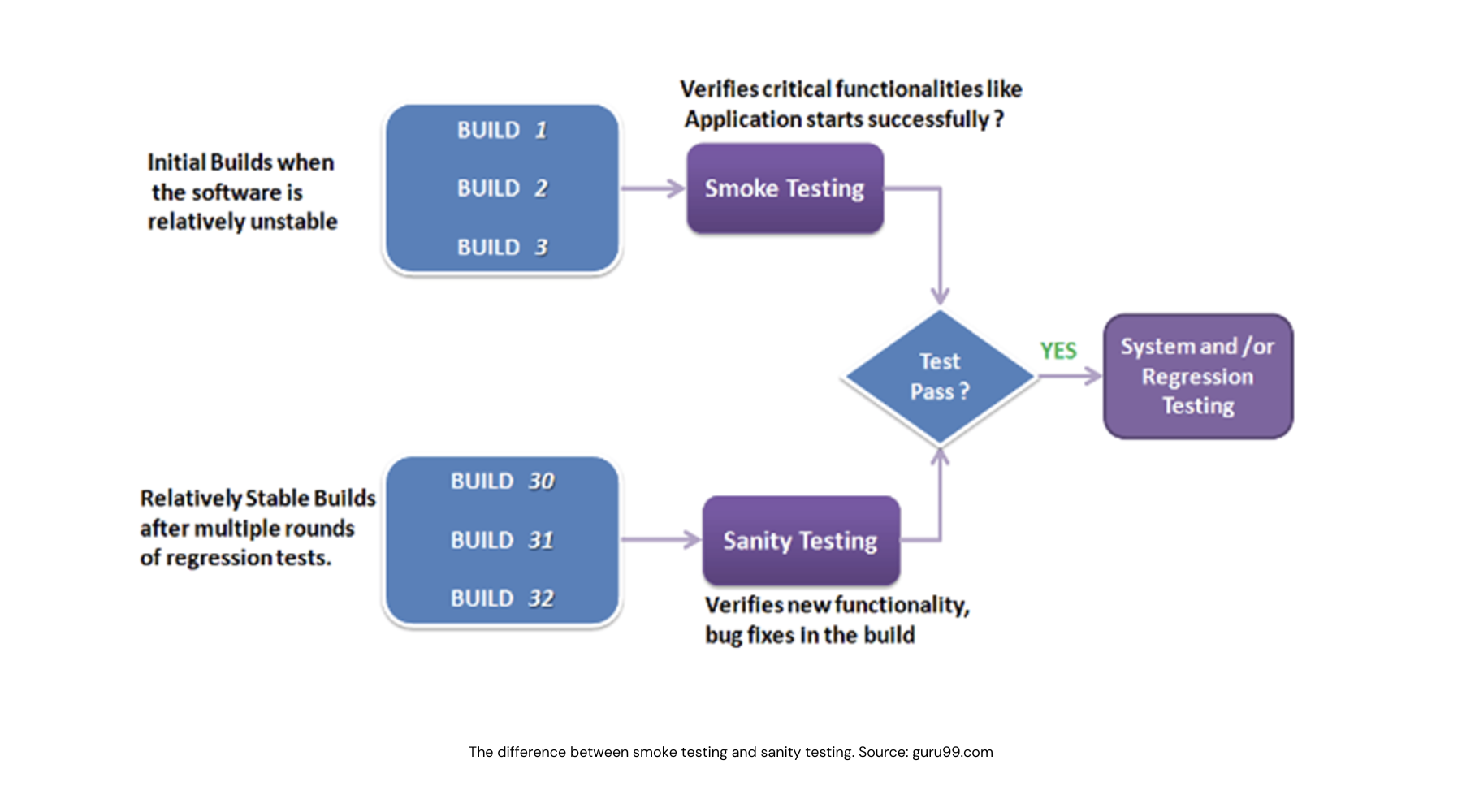
4. When to run smoke tests
Knowing when to execute smoke tests is as critical as understanding why they matter. Here are common scenarios where smoke tests bring immediate value:
- New build deployment: Each time your development team provides a fresh build, run smoke tests to confirm that key functionalities remain intact.
- CI/CD pipeline: In a continuous integration and continuous delivery (CI/CD) setup, automated smoke tests ensure that every code commit doesn’t break the essential user paths.
- Pre-production checks: Right before moving your build from staging to production, a quick smoke test cycle can prevent launch day disasters.
- Infrastructure changes: Even if the code hasn’t changed, updates to servers, database configurations, or API endpoints can affect functionality. Smoke tests clarify if these shifts have inadvertently caused disruptions.
At Digivante, we encourage embedding smoke tests into every major milestone of the software development lifecycle (SDLC). This consistent approach fosters a culture of quality, preventing issues from compounding over time.
5. Smoke testing in Agile environments
Agile development relies on short sprints, rapid feedback loops, and incremental feature rollouts. In such fast-paced cycles, speed and adaptability are paramount – and so is ensuring that the software remains stable after each sprint. Here’s how smoke testing dovetails with Agile:
- Daily or per-sprint execution: Quick checks aligned with daily builds or sprint endings ensure the team can react rapidly to flaws.
- Immediate feedback loop: Developers receive near-instant feedback on whether their recent code merges break core functionality, reducing back-and-forth.
- Cumulative quality: By frequently running smoke tests, Agile teams maintain a perpetual pulse on application health, ensuring that velocity doesn’t compromise stability.
For Agile teams, an automated smoke test suite integrated into the CI/CD pipeline can speed up this feedback loop, ensuring minimal friction to the fast, iterative process that defines Agile methodologies.
6. Manual vs. automated smoke testing
Both manual and automated approaches to smoke testing serve distinct purposes in QA. Deciding which to employ depends on your project’s complexity, the resources available, and the type of functionality you want to validate.
1. Manual smoke testing
- Strengths: Offers flexibility to testers, particularly useful for validating user experience nuances (UI elements, visual changes, etc.). Real human insight can catch issues automation might miss – like slight misalignment or poor text readability.
- Limitations: Time-consuming for repetitive tasks, and manual testers may unintentionally deviate from test scripts, introducing variability.
2. Automated smoke testing
- Strengths: Highly efficient for repetitive checks of core functionality. In CI/CD pipelines, automated smoke tests can run multiple times a day with minimal human oversight.
- Limitations: High upfront investment in scripting and maintenance. If tests are not well-designed, they can produce misleading results (false positives/negatives).
At Digivante, we advocate a hybrid model: combine the speed and consistency of automation for routine checks while leveraging human insights for more nuanced features. This equilibrium ensures that your smoke testing remains both efficient and user-centric.
7. Structuring your smoke testing efforts
A solid smoke testing strategy hinges on planning. Here’s how you might structure an effective smoke testing process:
- Identify high-priority features: List out the functions without which your application or website cannot operate. This could be user authentication, content browsing, checkout processes, or payment gateways.
- Set entry criteria: Define the conditions under which you’re ready to run smoke tests. Typically, the build must be deployable to a test environment, with all necessary services running.
- Create clear, concise test cases: Your test cases should be minimal yet thorough enough to cover essential features. Ambiguity leads to inconsistencies in execution.
- Establish exit criteria: Decide what percentage of these critical tests must pass to green-light further testing or a release. For instance, you might require a 100% pass rate for checkout functionalities.
- Document & report: Keep track of the test results, including which features passed or failed and any relevant comments. This documentation becomes your roadmap for troubleshooting and future improvements.
Pro tip: Over time, refine your smoke testing checklist. As your application grows, your “core features” might evolve. Make sure your smoke tests evolve, too.
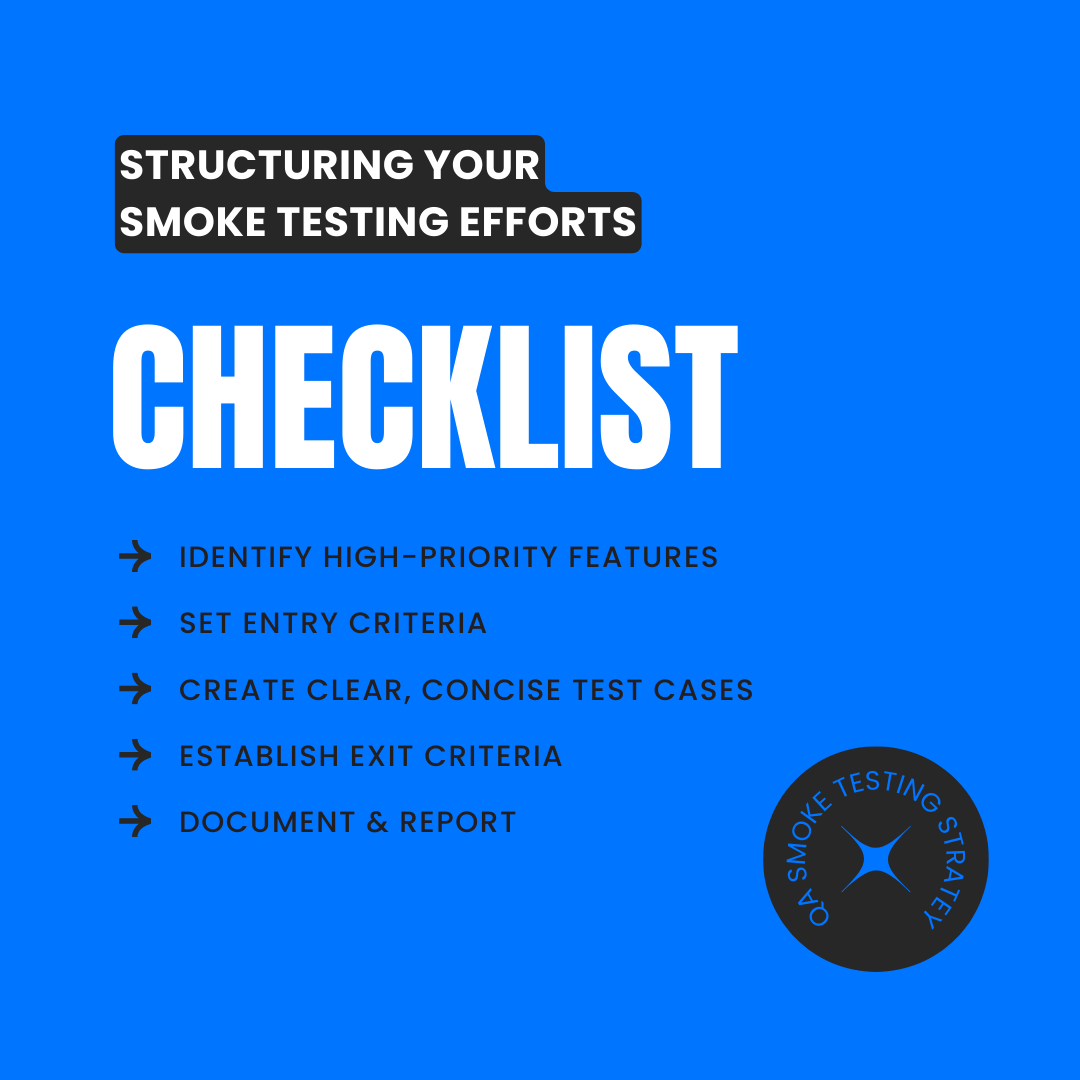
8. Smoke testing and crowdtesting: A synergy for real-world readiness
Smoke testing, while crucial, often focuses on the system’s functionality in controlled environments or through automated scripts. This is where crowdtesting comes into play. Crowdtesting leverages a diverse community of real users on real devices, spanning different geographies, operating systems, network conditions, and user backgrounds.
- Why crowdtesting after smoke tests?
- Realistic usage: Crowdtesters explore the app as real customers would, revealing usability bottlenecks or environment-specific bugs that routine smoke tests may overlook.
- Expanded coverage: The variety of devices, OS versions, and browser settings ensures a broad test coverage that simulates global usage patterns.
- Rapid feedback: Launching a crowdtest after a successful smoke test ensures that testers spend time on deeper issues rather than trivial or obvious breakages.
- Bridging the gap:
- Smoke tests validate core: Confirm that the build is stable and worth testing by a broad user base.
- Crowdtesting uncovers nuances: Surface user experience pitfalls, compatibility gaps, and performance hitches under real-world conditions.
- Iterative improvements: After crowdtesting, any critical bugs or usability concerns uncovered can be addressed, then re-validated with another round of smoke testing if necessary.
At Digivante, we see smoke testing and crowdtesting as complementary puzzle pieces. Each has a unique role, but together, they help shape a complete, user-centric view of your product’s readiness.
9. The Digivante approach to smoke testing
Digivante’s unique viewpoint on smoke testing revolves around delivering consistent quality and user satisfaction from day one. Here’s how we differentiate ourselves:
- Business-focused prioritisation: Instead of generic checklists, we tailor smoke test cases to the specific business drivers of each client. If your primary revenue channel is eCommerce, the checkout flow takes top priority. If you’re a B2B SaaS provider, user authentication and core dashboards might sit at the top of the list.
- Global testing community: Through our crowdtesting platform, we can follow up on successful smoke tests with real-world testing across global markets. This extends your QA coverage beyond lab conditions, ensuring real devices and real user insights.
- Expert consultation: We work closely with your QA, development, and product teams to refine smoke testing processes. This advisory extends from test case creation to continuous improvement, ensuring your approach remains agile and up-to-date.
- Robust reporting & communication: Once we run smoke tests, we present findings in actionable formats. Our clients appreciate clear, concise bug reports that highlight business impact, recommended fixes, and next steps.
10. Real-world impact: How smoke testing sets the stage for successful testing
Why smoke testing matters
Smoke testing is the first checkpoint in the quality assurance process. While it may not uncover deep functional or usability issues, it ensures that the test environment is stable and that key functionalities are operational before more in-depth testing (such as crowdtesting or full regression testing) begins.
By catching critical failures early, smoke testing allows teams to address fundamental stability issues before the product is handed over for deeper evaluation. This ensures that valuable testing time is not wasted troubleshooting basic system failures, allowing testers to focus on real-world usage scenarios and edge cases.
How smoke testing helps prevent launch day catastrophies
While smoke testing itself does not identify complex defects, it plays a crucial role in avoiding last-minute surprises. Here’s how:
Ensuring a testable environment: Before deeper testing begins, smoke tests confirm that the environment is stable, the site or application loads properly, and core user flows (such as login and navigation) are functional.
Preventing showstoppers from delaying testing: If the test environment is broken, crowdtesting and system testing cannot proceed. Smoke tests catch these fundamental issues early, ensuring a smooth testing process.
Accelerating issue resolution: By identifying major blockers early, development teams can quickly fix high-impact defects before the product reaches wider testing phases.
Delivering higher-quality feedback from testers: A stable environment means crowdtesters and QA teams can focus on meaningful issues, rather than reporting that the app won’t load or key functions are broken.
By conducting thorough smoke tests before handing the product over for full-scale testing, teams lay the foundation for a successful testing cycle – reducing delays, improving test efficiency, and ultimately preventing launch day disasters.
11. Overcoming common misconceptions about smoke testing
- “Smoke testing is too basic to matter.”
- Reality: While smoke tests are quick checks, they’re critical checks. Their purpose is to catch high-level, high-impact defects that undermine the entire user journey.
- “It’s only for big companies or complex projects.”
- Reality: Any digital product, regardless of size or complexity, benefits from smoke testing. Even a simple website has mission-critical paths that must be protected.
- “Smoke tests replace full regression testing.”
- Reality: Smoke tests precede, not replace, more comprehensive testing. They only confirm that the environment is stable enough for further testing. They do not check for detailed functionality and usability issues – that comes later in full regression testing or crowdtesting.
- “All smoke testing can be fully automated.”
- Reality: While much of smoke testing can be automated, certain front-end or user-interface checks may still benefit from manual validation, ensuring that your product “feels” functional to a human eye.
12. Crafting an effective smoke test suite
A. Identifying test scenarios
- User login: If users can’t even log in, the rest of the platform is moot.
- Navigation flows: Key menu items, buttons, and links must lead where they’re supposed to.
- Core functionalities: The “money paths” – like checkout for eCommerce or data submission for SaaS – are non-negotiable.
- Integrations: If your software relies on third-party APIs (payment gateways, mapping services, etc.), ensure basic connectivity and expected responses.
B. Detailing test steps
Make your smoke test scripts easy to follow:
- Pre-condition: Environment settings or data inputs required.
- Action steps: A concise list of actions (e.g., click login, input credentials, submit form).
- Expected results: E.g., “User successfully logs in and sees the dashboard” or “Payment processed, confirmation message appears.”
C. Determining metrics for success
- Pass/fail rate: Aim for 100% pass rate on mission-critical tests.
- Execution time: Smoke tests should be quick – ideally under 15–30 minutes for manual tests or just a few minutes for automated scripts in a CI/CD pipeline.
- Frequency: Daily, per-build, or per-sprint – whatever fits your development cycle and product volatility.

13. Ensuring ongoing maintenance and relevance
Smoke testing suites should evolve as you product changes, ensuring that they continue to validate the basic stability of key functions before more detailed testing takes place. As new features roll out, some might become “core” to your product, while older features might retire. Likewise, your architecture may change, shifting priorities and dependencies. Here’s how to keep smoke testing relevant:
- Regular reviews: At the end of each sprint or month, revisit your test plan to ensure it still aligns with business goals.
- Automated maintenance: If you use automation tools, refactor your scripts whenever you add or remove a critical feature.
- Cross-team collaboration: Encourage open dialogue between QA, development, product management, and design teams. They’ll surface new features or workflows that warrant inclusion in smoke testing.
At Digivante, we emphasise iterative improvement. QA isn’t a static discipline; it evolves with your product. A dynamic approach to smoke testing ensures that you never lose sight of what matters most to your users.
14. Embracing automation: Tools, techniques, and tips
Automation has become a linchpin for modern QA strategies, particularly in scenarios where rapid deployment and quick feedback loops are essential. Consider these best practices:
- Start small: Begin by automating the most stable and repeatable test cases. You’ll see immediate ROI without the complexity of trying to automate every scenario from day one.
- Choose your framework wisely: Tools like Selenium WebDriver, Cypress, or Playwright are commonly used for web-based smoke tests. For mobile apps, Appium is popular. The key is to pick a framework that aligns with your technology stack and testers’ expertise.
- Stay DRY (Don’t Repeat Yourself): Use modular, reusable components in your automation scripts. If multiple tests require a login step, create a single function for login and call it as needed.
- Integrate into CI/CD: Trigger automated smoke tests after each code commit, so the entire team gets immediate feedback if something breaks.
- Monitor & log effectively: Automated tests are only as good as their reporting. Leverage structured logging so you can quickly pinpoint the cause of failures.
15. Digivante’s crowdtesting: Scaling your QA horizons

Smoke testing ensures your product is stable enough for further testing. Once this initial check is complete, crowdtesting helps uncover real world usability and functional issues across diverse devices and user conditions – different geographies, devices, network speeds, and user backgrounds.
- Diversity in testing: Traditional lab testing can only simulate so many conditions. Crowdtesting covers everything from older Android phones to the latest iOS devices, bridging potential coverage gaps.
- Faster discovery of subtle defects: Real-world testers often find unconventional usage patterns that scripted smoke tests cannot predict, unearthing defects that might otherwise go unnoticed.
- Brand perception insights: Crowdtesters also provide qualitative feedback on user experience, design elements, and overall app flow. If something feels off to them, it likely will to your actual customers.
- Scalable testing model: Whether you need a small group of testers for niche scenarios or a large, global force for comprehensive coverage, crowdtesting scales to match your release deadlines and scope.
This synergy ensures you’re not just shipping a product that’s “technically functional,” but one that feels intuitive, engaging, and reliable to your end-users.
16. Metrics and KPIs to track
Quality assurance is only as good as the metrics you track. By monitoring specific Key Performance Indicators (KPIs), you’ll have a data-driven view of your smoke testing effectiveness:
- Smoke test coverage: Percentage of critical features covered by smoke tests.
- Test execution time: How quickly can you run through a smoke test cycle? Lower times indicate higher efficiency.
- Defect re-opening rate: How often do the same defects resurface, indicating that the fix might have been incomplete or a deeper issue remains?
- Mean Time to Detection (MTTD): How soon after code commit can you detect a critical bug? Shorter MTTD fosters quicker responses.
- Mean Time to Repair (MTTR): Once a defect is found, how long does it take to fix and validate? This indicates the efficacy of your overall QA-to-development feedback loop.
By continually refining these metrics, your smoke testing process can evolve, becoming more predictive and preventive, rather than reactive.
17. Fostering a culture of quality with smoke testing
Corporate culture can make or break a QA initiative. Integrating smoke testing into your organisation’s mindset helps everyone, from executives to developers, understand its value:
- Executive buy-in: Leadership should champion the significance of quick quality checks. When top management underscores smoke testing, teams are more likely to prioritise it.
- Cross-departmental collaboration: QA teams, developers, product owners, and even marketers benefit from knowing the system’s core functionality is stable. It prevents last-minute scrambles and fosters a more predictable release cadence.
- Rewarding proactivity: Encourage teams to treat smoke testing as a shared responsibility. Reward those who identify potential pitfalls early, turning problem-spotting into a celebrated achievement rather than a blame-game.
At Digivante, we aim to instill an ethos where testing isn’t merely a box to be checked, but a continuous activity that upholds brand integrity and delights end-users.
18. Common pitfalls and how to avoid them
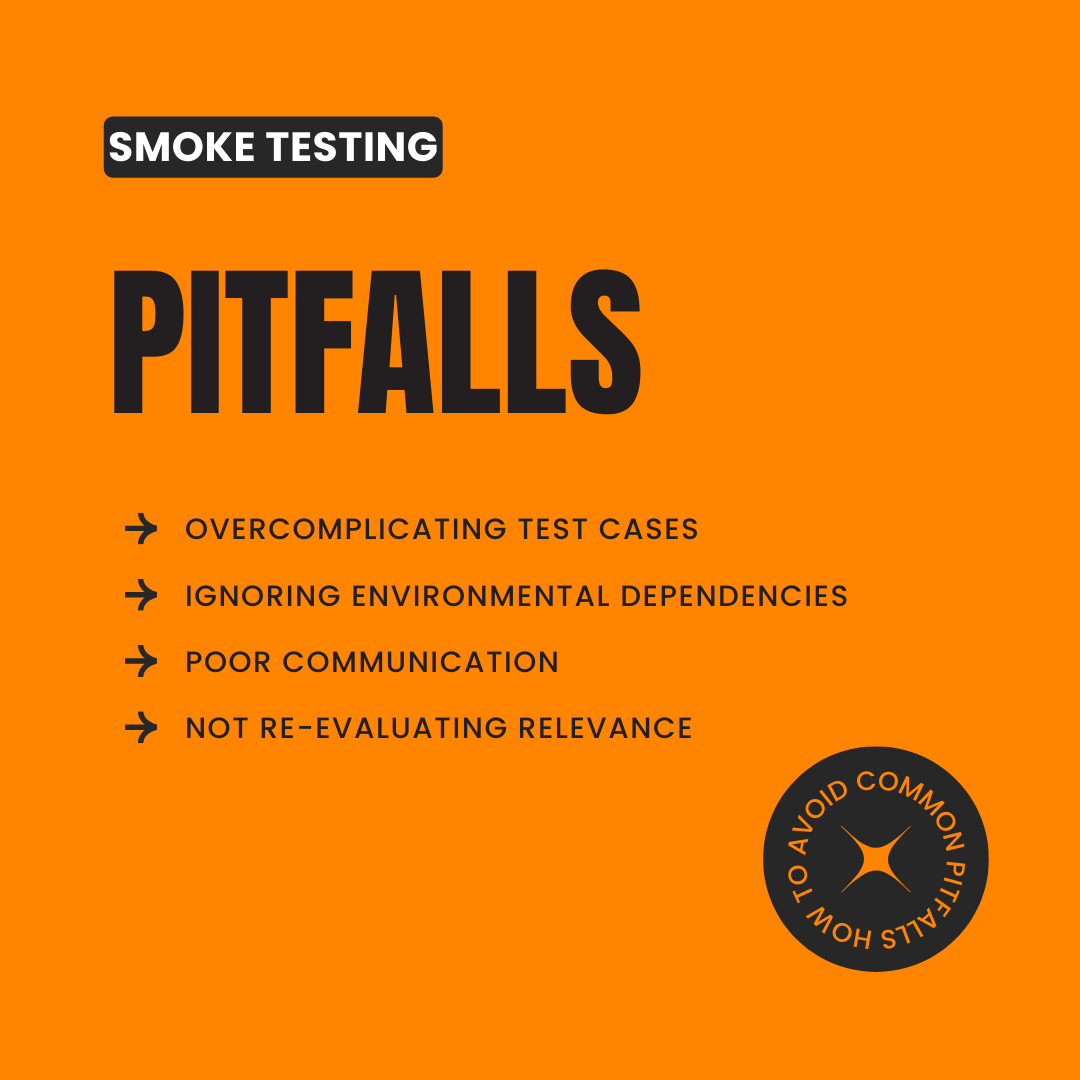
Despite its straightforward concept, smoke testing can go awry if not implemented thoughtfully. Here are some pitfalls to watch for:
- Overcomplicating test cases: Smoke tests should be succinct. Trying to validate too many functionalities in a single test run dilutes the focus on critical paths.
- Ignoring environmental dependencies: Make sure the test environment mirrors real-world conditions as closely as possible. If a service is offline or misconfigured, it skews test results.
- Poor communication: Failing to update development or QA teams about changes to the smoke testing suite leads to outdated scripts, confusion, and wasted effort.
- Not re-evaluating relevance: As your product evolves, your smoke test cases should too. Sticking to an outdated suite can result in false positives about overall quality.
19. The future of QA smoke testing
Technology trends like AI-assisted testing, container orchestration (e.g., Kubernetes), and serverless architectures are shaping how smoke testing will look in the coming years. We can anticipate:
- AI-generated test scripts: Machine learning models that analyze code changes and automatically generate the most relevant smoke tests.
- Smarter monitoring & alerting: Tools that integrate with logs and performance monitors to detect anomalies in real-time, effectively acting as 24/7 smoke tests.
- Shift-left integration: While unit testing is performed by developers to validate individual components before code leaves their hands, smoke testing ensures that the integrated system is stable enough for further testing. In modern development workflows, automated smoke tests can be incorporated earlier in the CI/CD pipeline – immediately after a successful build. This helps catch critical integration issues as early as possible, preventing unstable deployments from progressing further in the testing cycle.
At Digivante, we remain poised to integrate these emerging tools and methodologies, ensuring our clients benefit from the cutting edge of QA technology while maintaining the human touch that’s often essential for user-centric testing.
20. Final thoughts: Elevating user satisfaction through smoke testing
In today’s competitive digital landscape, ensuring that your software functions smoothly is a non-negotiable. Smoke testing plays a vital role in the QA process by acting as a first-line defense against critical failures. It provides a quick validation that the core functionalities of a system are working before more thorough testing takes place.
But remember: smoke testing alone does not directly enhance user satisfaction. Instead it lays the groundwork for deeper testing efforts, such as functional testing, regression testing and crowdtesting, that collectively ensure a high-quality digital customer experience.
At Digivante, we view QA smoke testing as an essential step in a multi-layered testing approach, one that ensures stability from the start and supports broader quality initiatives like crowdtesting. By validating core functionality early, you free up resources to refine the user journey, innovate boldly, and bring new features to market faster. The net result? A brand experience that consistently exceeds expectations and cultivates a devoted user base.
Your next step toward QA excellence
Smoke testing, in all its simplicity, stands as a powerful sentinel for quality. It ensures your digital product meets the minimum viability of “it works” before you pour resources into advanced testing or, worse, unwittingly serve up a broken experience to customers. However, the real magic unfolds when smoke testing is integrated into a broader QA strategy – one that embraces both technical and user-centric methods such as crowdtesting.
From our vantage point at Digivante, we’ve witnessed how meticulously planned and executed smoke testing can streamline development, accelerate time-to-market, and boost user satisfaction across a range of industries. In an online world where users have little patience for buggy or incomplete experiences, smoke testing is the swift, effective tool that buys you the credibility and trust to refine your product’s deeper layers.
If you’re ready to enhance your brand’s digital footprint with uncompromising quality, reach out to Digivante. Whether you need guidance in building a robust smoke testing strategy or want to leverage our global crowdtesting community for a comprehensive approach, our experts stand ready to lead you down the path of continuous improvement.
Because at the end of the day, quality isn’t just about preventing failures – it’s about sparking confidence, delight, and loyalty in every single user who experiences your digital product. And that’s the kind of lasting impression every brand aims to deliver.
